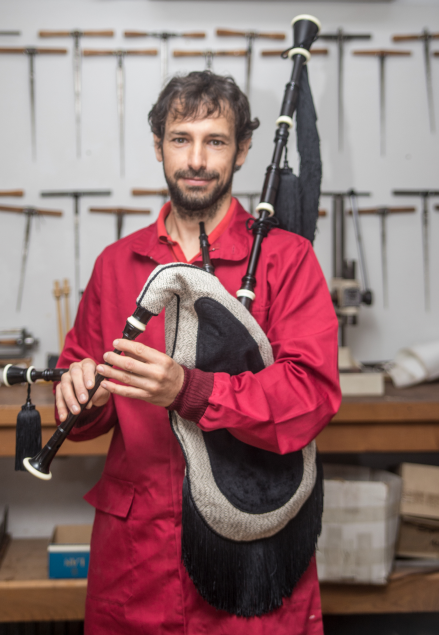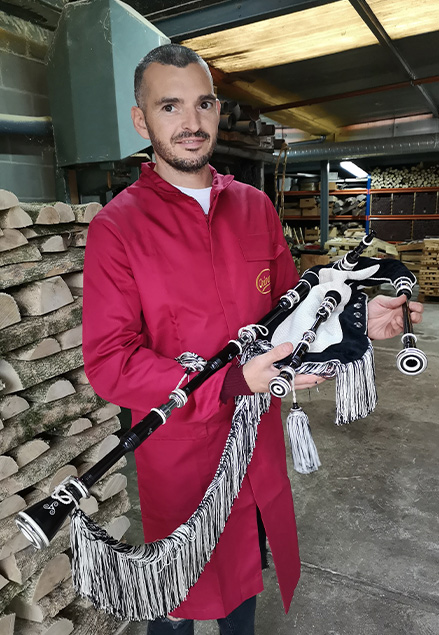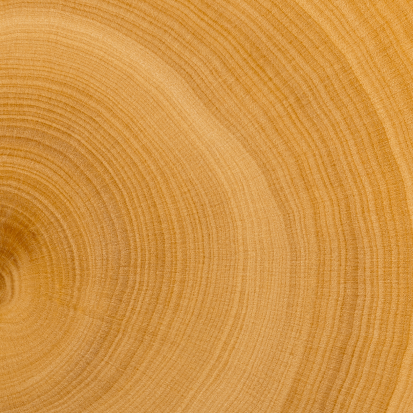
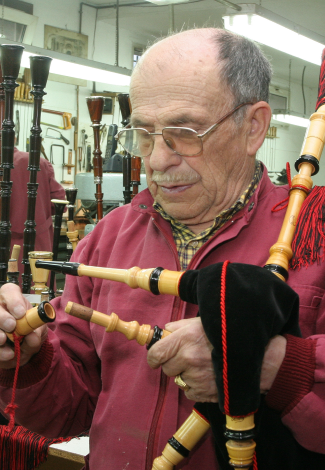
Xosé Manuel Seivane
Founds one of the most prestigious artisans and musicians sagas in the country. His activity in Ribeira de Piquín workshop, Lugo, made him a legend.


Álvaro Seivane
Living history of the Galician gaita and direct author of its evolution and excellence. Maximum contemporary constructive referent, with his high capacity, multidisciplinary training and visionary thinking, fills the gaita with landmarks and makes history.

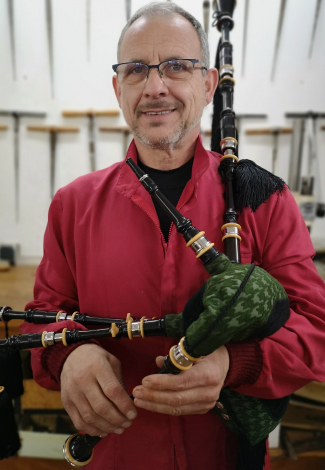
Xosé Manuel seivane
Achieve perfection in gaitas construction. With his innate abilities, natural skills and craftsmanship, he elevates the instrument to its highest level of perfection and projects it into the future.
Some History
The Beginning
Xosé Manuel Seivane Rivas (Fonmiñá, A Pastoriza, Lugo, 1921 – Cambre, A Coruña, 2012) made his first gaita in 1939 in a small workshop, which was based in this small area in the region of Terra Chá, thus creating the first ‘Seivane’ seal. Despite the fact that he was already a bagpiper and clarinettist, he fulfilled a childhood dream of making his very own instrument.
His father Francisco, a great carpenter and his mother Estrella, blessed with a marvellous musical ear, gave him some very solid foundations in order to develop his craftsmanship skills. He inherited the techniques, tools and wood from his father and the musical sensitivity, especially in relation to tuning and pitch, from his mother. She also gave him the melodies of bagpipers who had already disappeared, such as Curuxeiras, who was born in A Pastoriza, López from Baltar, or Francisco do Crego from Sinde.
Whilst serving his period of military service in Pontevedra, he meets another craftsman, Antón Represas, who was known as ‘O Marreco’, with whom he shares stories and knowledge, helping him to make several gaitas for the army.
It was the beginning of a difficult journey, as being in the post-war, the needs during that period did not include purchasing something that was solely for enjoyment. At that time, gaitas were made by carpenters/lathe operators and bagpipers tuned and made their own chanter reeds. There were very few people who were both gaita maker and player; one of the few was, without doubt, Xosé Manuel.
With limited resources but bestowed with great talent and ingenuity, as a skilled person that he was, managed to meet the necessary requirements for the development of manufacturing techniques, from a deeply immersed musical perspective. His hopes were fulfilled and, a year later, he married and established himself in Ribeira de Piquín (Lugo). At first, he supplied only local bagpipers but gradually widened his field of work until he had gone beyond country borders and converted the Obradoiro into a place of pilgrimage for bagpipers and the lovers of traditional music from Galicia.
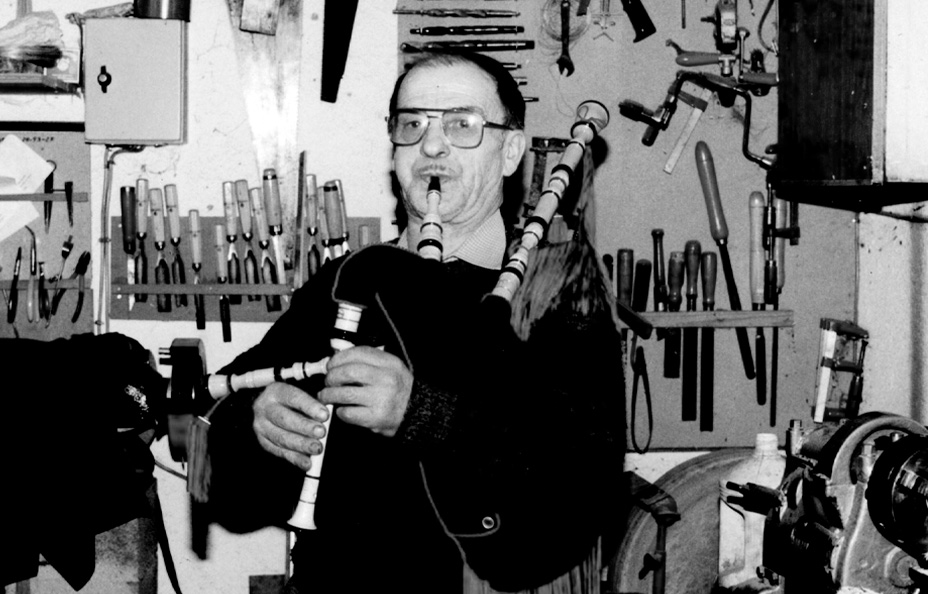
The continuity
His sons Álvaro (born in Ribeira de Piquín, Lugo 1952) and Xosé Manuel (born in Ribeira de Piquín, Lugo 1964), follow their father’s footsteps from a young age in the same way as he had done with his own father. By his side, they begin learning the obscure trade secrets which come from their daily involvement with wood and being able to memorise its sound when they hear it, thus embedding forever the colour of the Seivane sound.
In 1967, Álvaro began the Industrial Officership, in the branch of Automotive, at the IES As Mercedes in Lugo, where he graduated five years later as an outstanding student of the first class.
In 1972, Álvaro moves to Barcelona, studies Industrial Master and begins work as an engineer. He establishes himself there over fourteen years and works in the industrial sector (designing and building tools and prototypes), where he gains the invaluable experience which he would later apply to craftsmanship and combines his work with the construction of gaitas in his workshop, created as the spitting image of his father’s. From there, he supplies Galician Centres in Catalonia and even across Europe.
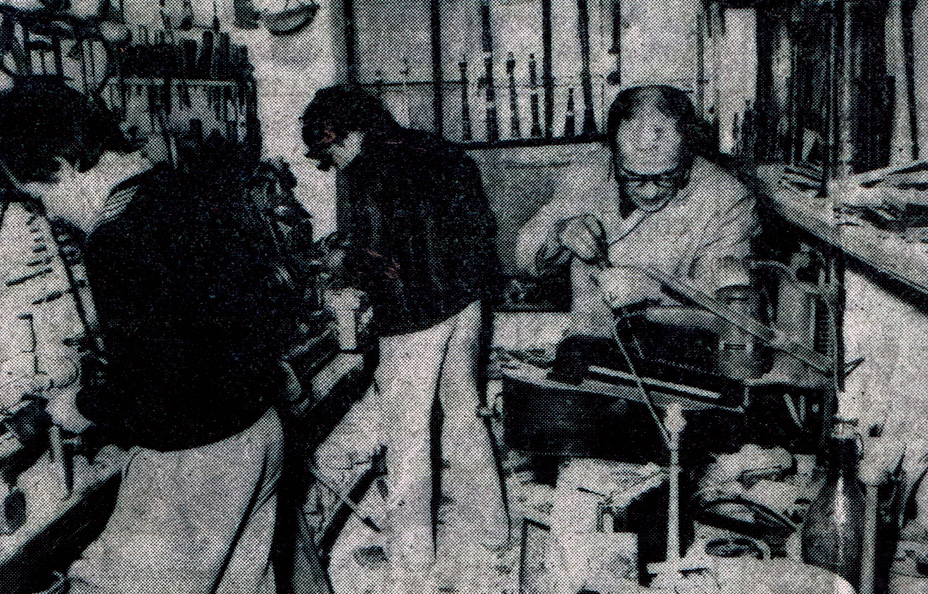
In 1986, Álvaro decides to return to Galicia, with the aim of creating the Obradoiro de Gaitas Seivane alongside his father and brother, bringing them all together once more.
Meanwhile he settles in Cambre, A Coruña, and prepares the infrastructure of the current workshop, by exchanging jobs and ways of seeing with the Ribeira de Piquín atelier. It is a very exciting stage because he is fully dedicated to the gaita and very fruitful in research, with the discovery of the breathable fiber bag (Goretex) or the study of ergonomic patterns and lines until reaching the current bags that have been standardized by the majority of artisans.
En 1994, going against the proverbial Galician fragmentation (“minifundismo”), all their individual experience is brought together in order to form, in Cambre (A Coruña), the current Obradoiro de Gaitas Seivane.
By starting a trade which was essentially individual and with extended delivery times, a pioneering firm is created in Galicia, with greater manufacturing capabilities and with the intention of modernising the traditional techniques for crafting and above all else, to investigate and delve into all the aspects related to the gaita, to offer the very highest quality in their products.
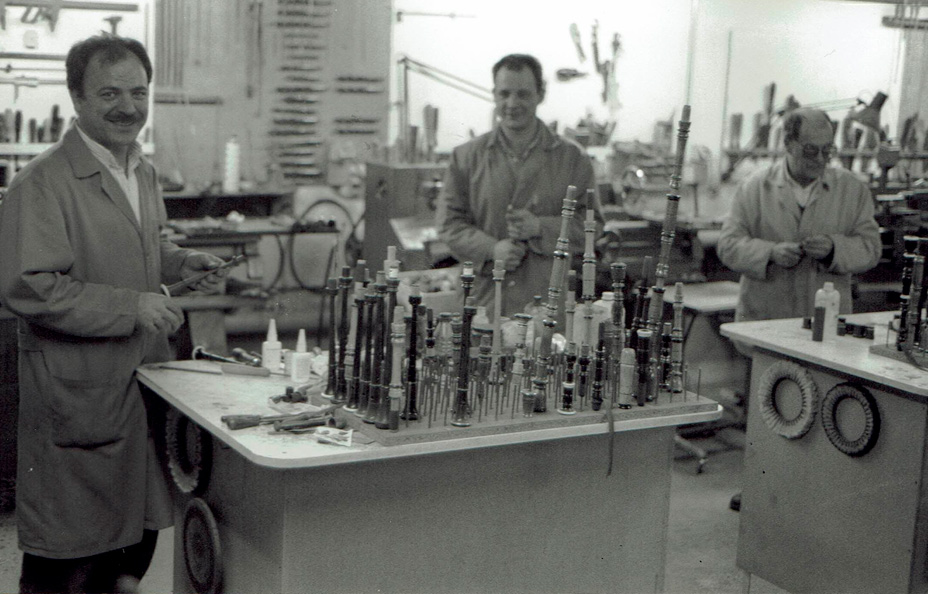
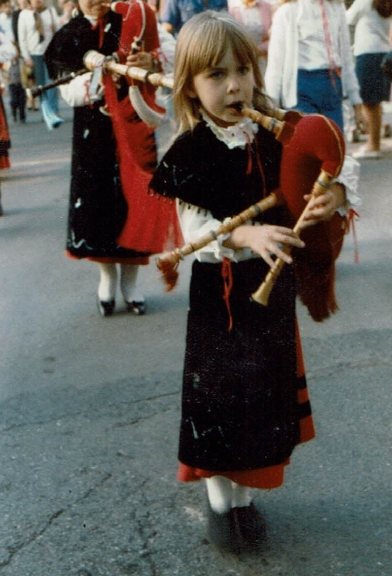
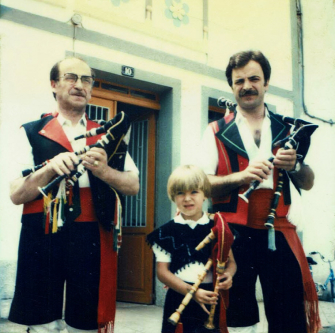
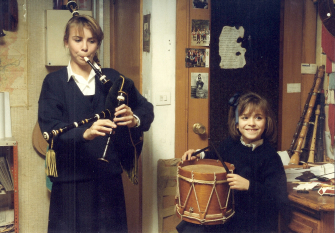
The New Generation
A breath of fresh air was felt with the creativity of Susana Seivane (born in Barcelona, 1976), Álvaro’s daughter, who at the age of five began playing the gaita and by the age of ten was already taking part in festivals as a soloist. This had a vast effect on young people, especially girls, who quickly became more involved in the world of the gaita. Today is one of the most internationally recognized gaita interpreters.
Saínza Seivane, Susana’s sister, is currently practically the only woman in Galicia who is dedicated to making bagpipes, and combines her craftsmanship with administrative tasks. Vanessa manages the office and coordinates the administration and communication of the company. Moisés and Miguel are skilled artisans who are also part of the workshop. And Raquel is the responsible person for sewing and making the Seivane bagpipes covers.
The Present Time
Álvaro and Xosé, now directly responsible for the workshop, begin to work on new ways of understanding the manufacturing process, making use of the latest technological advances and precision machinery to apply them to the craftsmanship skills.
This combination of a traditional craftsmanship spirit and technology, the taste for things well done, congenital creativity and sonority intuition are the pillars of the Seivane brand, distinguished by the strong individual identity of their products and their excellent quality. As pioneers in the evolution of the instrument, they would be marking a before and after in the construction of gaitas and would become the blueprint for everybody to follow.
Susana carries the Seivane name around the world, its instruments and the best of the traditional repertoire of Galicia.

